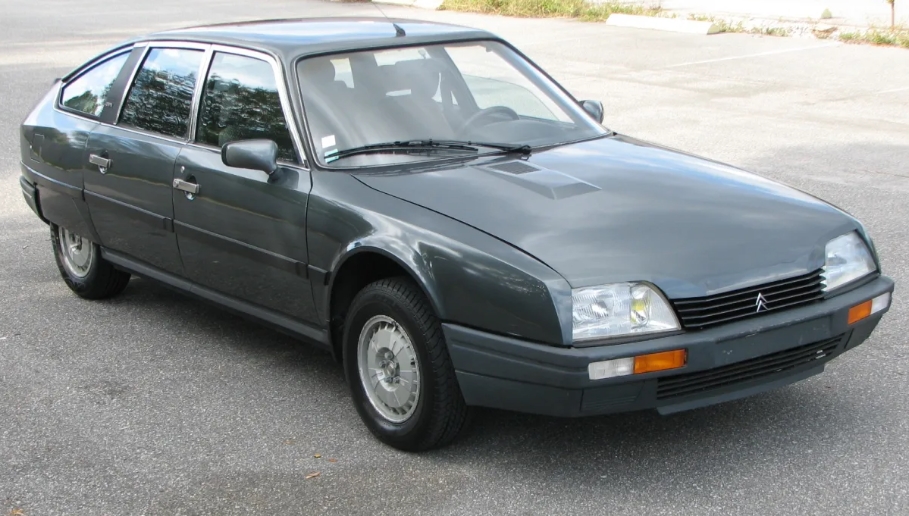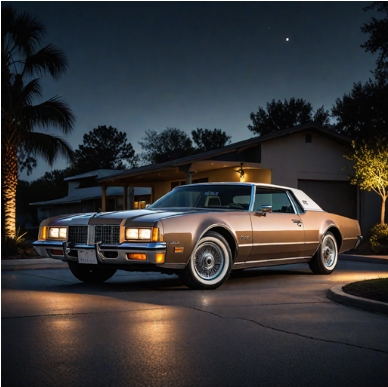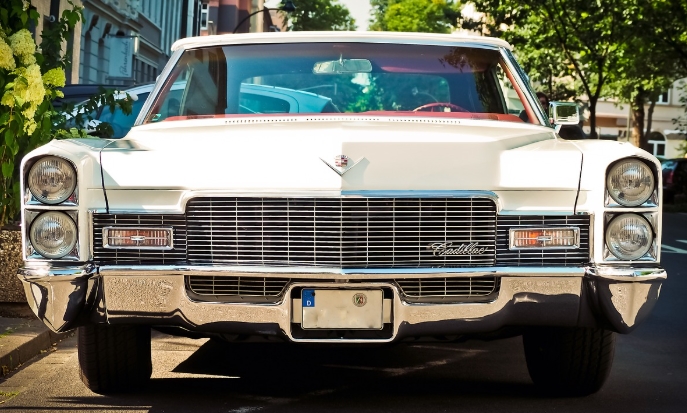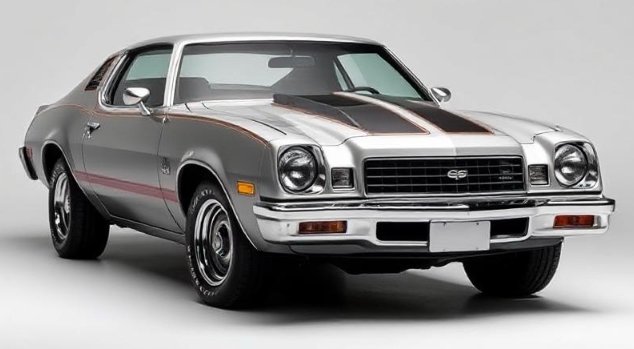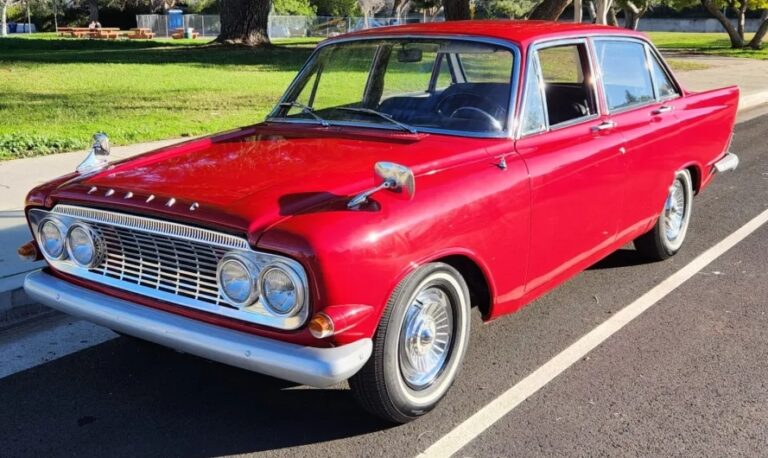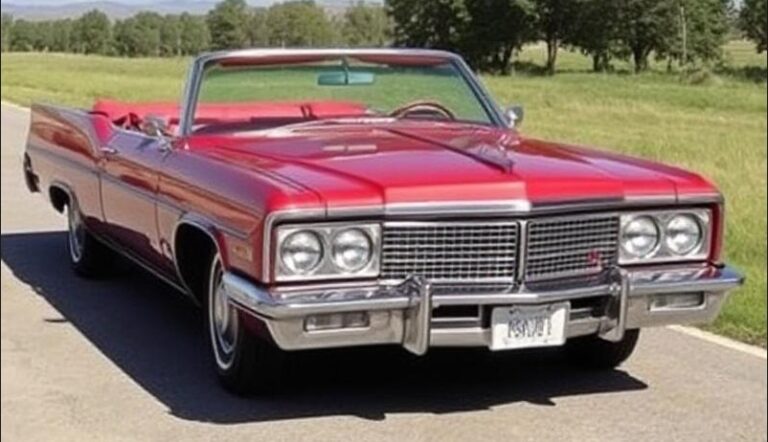The Last Goddess: Charting the Evolution of the Citroën CX
In the annals of automotive history, few cars have dared to be as audaciously different as the Citroën CX. Launched in 1974 as the long-awaited successor to the revolutionary DS, the CX was not merely a new model; it was a defiant statement of intent from a manufacturer that viewed the automobile as a high-concept art form. Its name, derived from the French term for drag coefficient (Cd), was a direct nod to its primary design principle: to cleave the air with unparalleled efficiency. Over a production run that spanned from 1974 to 1991, the CX evolved from a futuristic family saloon into a diverse range of powerful GTs, capacious estates, and luxurious limousines, forever cementing its status as the last truly uncompromising Citroën.
The Genesis: Series 1 (1974–1985)
The story of the CX begins in the shadow of its legendary predecessor. Replacing the DS was a Herculean task, but designer Robert Opron, who had also penned the equally avant-garde SM, was more than qualified. The CX’s design was a masterful blend of aerodynamic theory and space-age aesthetics. It featured a long, low, fastback silhouette with a distinctive Kamm tail, large glazed areas, and a concave rear window that ingeniously shed rain without the need for a wiper.
Beneath the swooping bodywork, the CX was pure Citroën. The heart of the car was its advanced self-levelling hydropneumatic suspension, a system that provided a ride quality so serene it was often likened to a “magic carpet.” This system not only absorbed road imperfections with disdain but also maintained a constant ride height regardless of load. Paired with this was the DIRAVI (Direction à rappel asservi) power steering from the SM, a speed-sensitive system that was highly geared and would automatically return to the straight-ahead position, even when stationary. It was a unique, demanding, but ultimately rewarding system for the acclimatised driver.
The interior was even more radical. The dashboard was a study in ergonomic futurism, designed to allow the driver to access all major controls without removing their hands from the single-spoke steering wheel. The main instruments were housed in a crescent-shaped binnacle, featuring a rotating drum “cyclops eye” speedometer and tachometer. Ancillary controls for indicators, wipers, and horn were placed on satellite pods, or “satellites de commande,” flanking the main display.
Launch and Early Models (1974-1977):
The Citroën CX was unveiled at the 1974 Paris Motor Show and was immediately crowned European Car of the Year for 1975. The initial launch line-up was modest, using engines derived from the DS:
CX 2000: The entry-level model, featuring a 1985cc petrol engine producing 102 bhp. It was available in two trims:
Confort: The base specification.
Super: Offered slightly more upscale features and trim.
CX 2200: A more powerful version with a 2175cc petrol engine delivering 112 bhp, available in the same Confort and Super trims.
Citroën quickly expanded the range to broaden its appeal:
CX 2200 D (1975): A crucial addition, this model used a 2175cc diesel engine. It was one of the first executive cars to offer a diesel option, praised for its refinement and economy in the wake of the 1973 oil crisis.
CX Prestige (1976): This was the definitive luxury CX. Its wheelbase was stretched by 25 cm (10 inches), providing palatial rear legroom. It was initially powered by the 2.4-litre engine and became the vehicle of choice for French presidents and dignitaries.
CX Safari and Familiale (1976): The estate versions arrived, instantly becoming the most capacious wagons on the market. The hydropneumatic suspension ensured the vast load bay remained level. The Safari was a conventional five-seater with an enormous boot, while the Familiale featured a forward-facing third row of seats, accommodating seven or even eight passengers.
Pallas Trim (1976): Introduced across the petrol range, the Pallas trim level represented the height of Citroën luxury. It added plush velour or leather upholstery, thick carpets, additional soundproofing, and distinctive stainless-steel trim around the windows.
CX 2400 (1976): The 2.2-litre engine was replaced by a more powerful 2347cc unit, available in both carburetted form and, crucially, with Bosch L-Jetronic fuel injection.
CX 2400 GTI (1977): This was a landmark model. The fuel-injected 2.4-litre engine produced 128 bhp, transforming the serene CX into a genuine grand tourer capable of challenging German rivals. The GTI featured distinctive alloy wheels, fog lamps integrated into the front bumper, and a sportier interior trim, marking the CX’s entry into the performance saloon market.
The Diesel Revolution (1978-1985):
Citroën continued to innovate, particularly with diesel technology.
CX 2500 D (1978): The 2.2D was replaced by a larger 2500cc diesel engine, offering more torque and greater refinement.
CX 25 D Turbo (1983): This was a game-changer. By adding a turbocharger to the 2.5-litre diesel, Citroën created the fastest diesel production car in the world at the time. The CX TRD Turbo (as it was often badged) could reach nearly 120 mph, offering performance that was previously unheard of for an oil-burner, combined with excellent fuel economy.
CX 25 GTi Turbo (1984): Not to be outdone, the petrol range received its own turbo. The 2.5-litre petrol engine was turbocharged to produce a potent 168 bhp. This model, identifiable by its “TURBO” side decals and unique alloy wheels, could sprint from 0-60 mph in under 8 seconds, making it a true high-speed continental cruiser.
The Rejuvenation: Series 2 (1985–1991)
By the mid-1980s, the CX’s futuristic design was beginning to look dated. In July 1985, Citroën launched the heavily revised Series 2 (often called the CX2) to modernise the car and keep it competitive.
The most obvious external change was the replacement of the slender stainless-steel bumpers with large, integrated plastic units. This gave the car a more substantial, contemporary look, though some enthusiasts mourned the loss of the original’s delicate chrome detailing. Other subtle changes included revised wing mirrors and improved rust-proofing, addressing a known weakness of the Series 1 cars.
Inside, the changes were more dramatic. The iconic rotating drum speedometer and satellite controls were gone, replaced by a more conventional instrument cluster with traditional analogue dials. While this move was intended to make the car more palatable to conservative buyers—a likely influence of new owner Peugeot—it arguably stripped the CX of one of its most unique character traits.
The Series 2 saw a rationalisation and evolution of the model range:
Petrol Engines: The carburetted engines were phased out in favor of fuel-injected units.
CX 20 RE: A 2.0-litre fuel-injected model for entry-level trims.
CX 22 TRS: A 2.2-litre fuel-injected model offering a balance of performance and economy.
CX 25 RI / Pallas IE: The standard 2.5-litre naturally aspirated fuel-injected engine continued to power the mainstream luxury models.
The Ultimate Performance Models:
CX 25 GTi Turbo 2 (1986): The already formidable GTi Turbo was enhanced with the addition of an intercooler. This boosted power to 168 bhp (the same peak figure but with a fatter torque curve) and dramatically improved throttle response and reliability under sustained high-speed driving. With a top speed exceeding 135 mph, this was the definitive performance CX and an undisputed king of the fast lane.
CX 25 TRD Turbo 2 (1987): The diesel flagship also received an intercooler. This boosted the power of the 2.5-litre turbo diesel to an impressive 120 bhp, once again making it one of the fastest and most powerful diesel saloons in the world.
Trim Levels: The naming convention evolved throughout the Series 2 production.
Leader: A popular, well-equipped special edition that often became a mainstay of the range.
RD/TRD: Designations for diesel models.
RE/TRS/RI: Designations for petrol-injected models.
Pallas, Prestige, GTI, and Safari/Familiale models continued as the cornerstones of the luxury, performance, and utility offerings.
Production of the CX saloon ended in 1989, making way for its successor, the larger and more angular Citroën XM. However, the immensely popular Safari and Familiale estate models continued to be produced until 1991, their practicality and unique self-levelling suspension remaining unmatched.
.
MANY auto lovers not only spend time in their garages to tinker on their autos, but have other projects going on in there as well. Wood working is a popular pastime for the creative type of individual. Not sure what to make next? Or thinking about getting into this kind of hobby? There’s lots of possibilities… Here’s some of them…

.
Legacy of a Non-Conformist
The Citroën CX was more than just a car; it was the final expression of a philosophy. Born from the same innovative spirit as the 2CV and DS, it prioritised driver and passenger comfort, aerodynamic efficiency, and ergonomic ingenuity above all else. Its journey from the elegant, chrome-adorned Series 1 to the powerful, intercooled Turbo 2 of the late 1980s mirrors the technological shifts of its era.
While its successor, the XM, carried on the hydropneumatic tradition, it did so with a more conventional design and interior, shaped by the pragmatic influence of Peugeot. For this reason, the CX is held in special regard by Citroën purists. It was the last car designed and launched by an independent Citroën, a swansong for the era of radical, uncompromising, and brilliantly eccentric automotive design. Today, to drive a well-maintained CX is to experience a unique blend of serene comfort and futuristic vision—a rolling testament to a time when a car could be a goddess of the highway.
